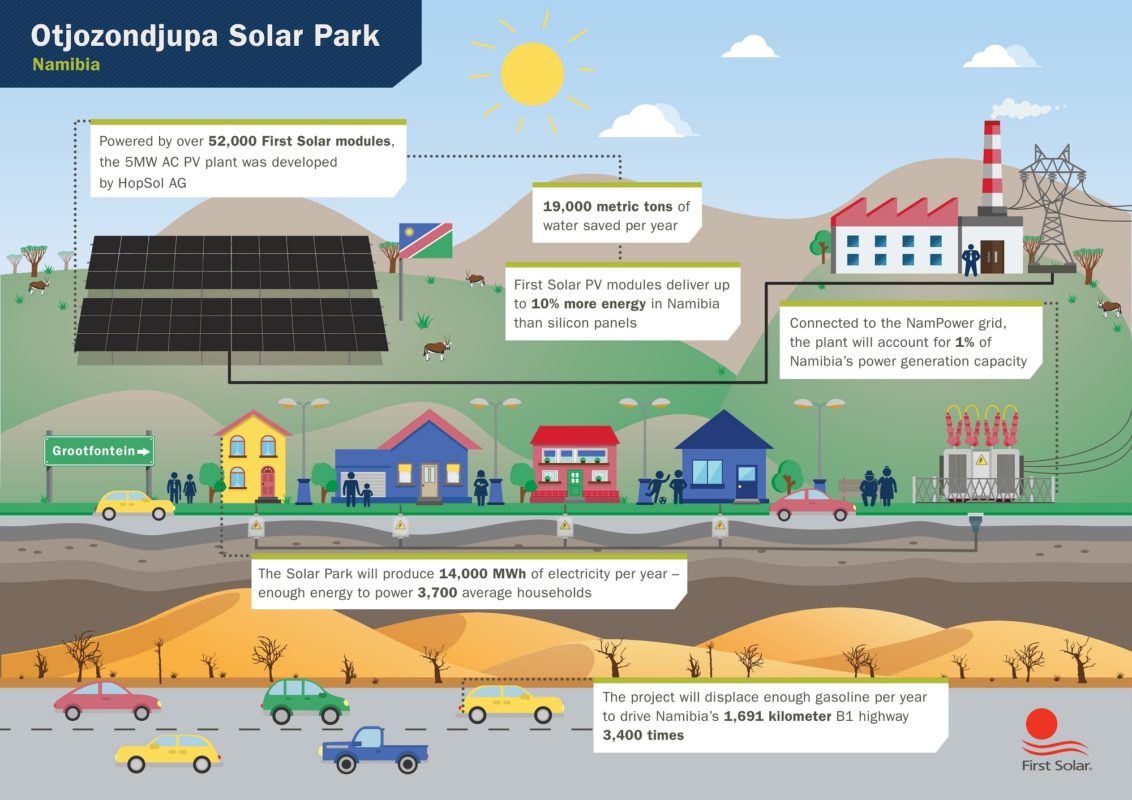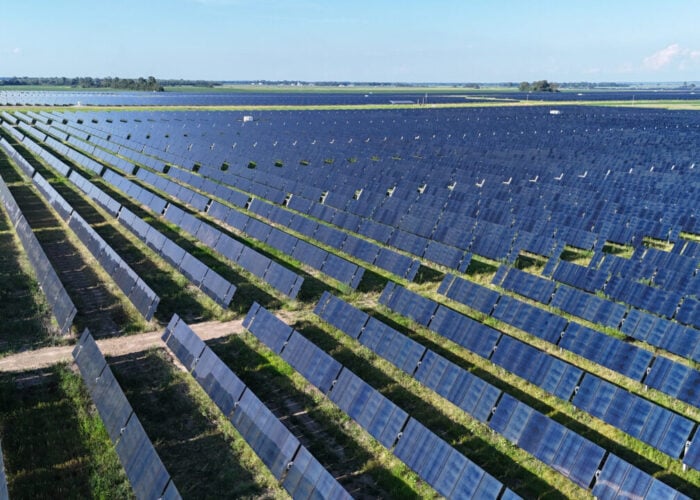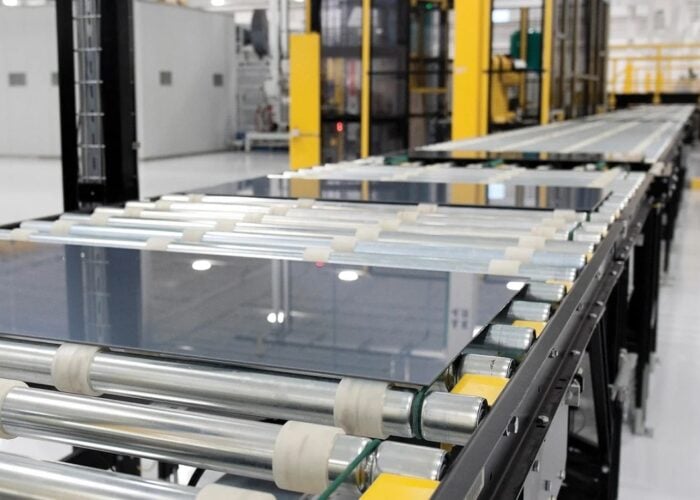
Swiss developer HopSol has selected First Solar modules for a 5MW project in Namibia in southern Africa.
The Otjozondjupa Solar Park is set to be Namibia’s largest grid-connected PV project when completed later this year, accounting for around 1% of the country’s total generation capacity.
Try Premium for just $1
- Full premium access for the first month at only $1
- Converts to an annual rate after 30 days unless cancelled
- Cancel anytime during the trial period
Premium Benefits
- Expert industry analysis and interviews
- Digital access to PV Tech Power journal
- Exclusive event discounts
Or get the full Premium subscription right away
Or continue reading this article for free
Located near Grootfontein in central Namibia, the Otjozondjupa project will incorporate around 52,000 of First Solar’s CdTe thin-film modules.
It is expected to deliver around 14,000MWh of electricity per year to state-owned utility, NamPower.
“Our decision to select First Solar’s thin film modules was primarily driven by the operating conditions in the area. We needed a reliable module technology that would thrive in the hot temperatures that are common in the summer months and also deliver energy in cloudy, low-light conditions. In fact, by our estimates, thin-film modules deliver up to 10% percent more energy in Namibia than conventional silicon PV panels,” said Robert Hopperdietzel, chairman of HopSol AG.
Maximising yield

The facility will use single-axis tracking technology to maximise energy yield by up to 25% percent, according to a First Solar statement. The system has been designed to minimise water usage, in what is a particularly dry part of the world.
“The Otjozondjupa Solar Park exemplifies Namibia’s ambitions of energy security and demonstrates the role that cost competitive solar can play in an independent power production ecosystem,” said Nasim Khan, vice president for Africa at First Solar. “As Namibia continues to shore up its generation capacity by adding renewables to its portfolio, HopSol’s project will, no doubt, stand out as a singular example of the sustainable development of solar energy in the country.”
The project is due for completion in June this year.





